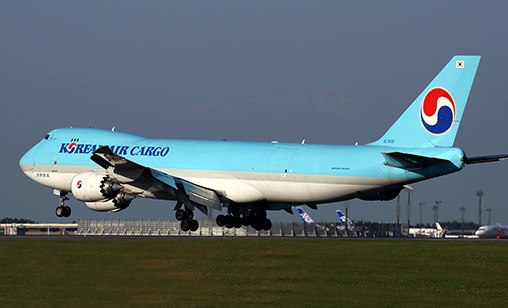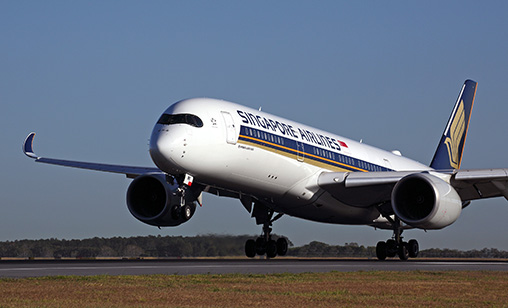Air Cargo
Industry wallflower new belle of aviation ball
Air freight remains the one bright spot for the airline industry as the coronavirus pandemic continues to bite deeply into the passenger business. Yet air cargo operators are struggling to provide the capacity to meet demand, reports associate editor and chief correspondent, Tom Ballantyne.
November 1st 2020
The International Air Transport Association’s (IATA) chief economist, Brian Pearce, makes it clear just how much pressure aviation’s air cargo operators are experiencing. Read More » “Freighters are being used as intensively as possible. I think they are being flown more than 11 hours a day which is a record. Airlines have been trying to use passenger aircraft to carry cargo. More than 2,000 passenger aircraft are carrying cargo. Airlines are doing the best they can to serve the needs,” he said.
Despite this, airlines cannot satisfy demand. “The issue for cargo is the shortage of capacity. Typically, half of the cargo would be carried in the bellies of wide-body passenger aircraft that usually operate on long-haul services. Most of those markets are still not open,” he said.
 |
IATA’s latest freight statistics, released in late September and covering August, underscored the fact improvement in the sector remains slow because of insufficient capacity. Demand moved slightly in a positive direction month-on-month, however levels still remain depressed compared with 2019.
Cargo tonne-kilometres (CTKs) were 12.6% below previous year levels in August (-14% for international operations), a modest improvement from the 14.4% year-on-year drop recorded in July. But global capacity shrank by 29.4%. Belly capacity in passenger jets for international air cargo was 67% below the levels of August 2019.
Asia-Pacific airlines, the world’s biggest movers of air cargo, saw international cargo demand slide 19.3% year-on-year in August, with the Association of Asia Pacific Airlines (AAPA) citing ongoing weakness in global trade flows. Freighter operations in the region remained active, but significant reductions in passenger operations led to a 33.4% year-on-year decline in offered freight capacity.
“Economic indicators are improving, but they have not yet been fully reflected in growing air cargo shipments,” said IATA director general and CEO, Alexandre de Juniac. “That said, air cargo is much stronger than the passenger side of the business. One of our biggest challenges remains accommodating demand with severely reduced capacity. If borders remain closed, travel remains curtailed and passenger fleets remain grounded, air cargo’s ability to keep the global economy moving will be challenged.”
Analyst CAPA said with the peak season underway and severe capacity constraints in place shippers may look to alternatives such as ocean and rail to keep the global economy moving.
 |
“The overall reduction in freight capacity, plus much more robust demand for air cargo versus air passengers, has pushed up cargo yield and load factor. This has the potential to offset lower volumes and drive cargo revenue to positive growth in 2020. Nevertheless, this will not offset haemorrhaging passenger revenue,” it said.
CAPA tracks freight capacity trends by combining flight schedules data from OAG with cargo payload (in kilograms) for each aircraft. It has pointed out Asia-Pacific freight capacity is falling least heavily, with a year-on-year decline of 34.1%.
Freight capacity has been cut by 50% in the Middle East, 52.5% in Africa, 54.3% in Europe, North America 46.5% and 55.4% in Latin America.
The conclusion of previous CAPA reports on the impact of the COVID-19 crisis on air cargo remains unchanged: Air cargo revenue is more virus proof than air passengers, but cargo alone cannot save airlines.
Nevertheless, airlines are scrambling to increase cargo capacity, a sector AAPA director general, Subhas Menon, has predicted will become extremely important to carriers as they recover from the crisis. Ascend by Cirium head of market analysis, Chris Seymour, said the air freight sector had just emerged from its worst year for traffic in a decade, driven by weak global trade and a 3.3% fall in freight tonne-kilometres (FTKs), when the COVID-19 pandemic struck.
Underlying numbers hide differing fortunes, he said. “The fleet of main deck freighters in service has increased by 65 aircraft since the start of the crisis and utilisation has gone up.”
There was a slight decline in the main deck freighter jet in-service fleet in February and March followed by increases each month since then. Forty five additional aircraft were in service by late August compared with January 31 this year.
 |
“In the high capacity, long-haul fleet, the 747 remains the market leader, with a fleet of 300 in August, an increase of 10. This includes delivery of three new 747-8Fs, but also eight -400Fs and an -200F coming out of storage, indicative of the short-term demand for lift. One 747-400SF, which has been stored for seven years, is being reactivated,” Seymour said.
Not surprisingly, the business of converting passenger aircraft to freighters is booming, as are plans by major aircraft manufacturers to produce new freighters. Boeing is looking at a new 777-X freighter based on the 777-8, which is predicted to be popular for the replacement of older B777Fs and B747-400Fs. It is estimated to have a payload capability similar to the 747-400F.
Airbus may develop an A350 freighter, based either on the -900 or -1000, but neither project is expected to be seriously considered until the late 2020s - at the earliest.
Seymour said the fleet of intermediate sized freighters numbered almost 600 at the end of 2019. “In the next 20 years, the opportunity exists to replace more than 60% of that fleet of A300s and B767s and grow it by a forecast 350 aircraft. The 767-300F has an advantage over other freighters because it is very much ‘right sized’ for integrator and e-commerce demand,” he said.
“With a backlog of 53 of the type and nine orders to date in 2020, Boeing has increased its production of the type and is delivering 18-20 of the airplanes a year. FedEx is a key customer. Boeing also is considering a possible re-engineered 767-X using the 787’s GEnx engines, for the 2030s, in part driven by the need to meet new ICAO environmental regulations.”
Orders for conversions are coming in regularly. Boeing has announced a firm order, from an unidentified customer, for two 737-800 Boeing Converted Freighters (BCF) and has agreements to open additional conversion lines in Guangzhou and Singapore to meet strong market demand.
South Korea’s Asiana Airlines has converted three passenger jets to cargo planes to offset its sharp decline in air travel demand. It has converted an A350-900 passenger jet and two 777-200ER jets to cargo carriers, joining two 777-200ERs already in service on Asian routes and an A350-900 flying to the U.S.